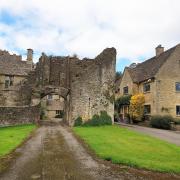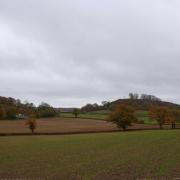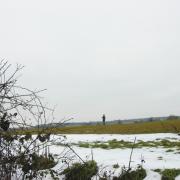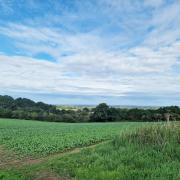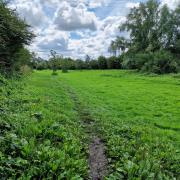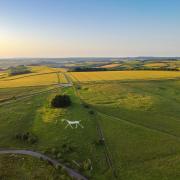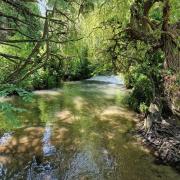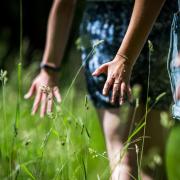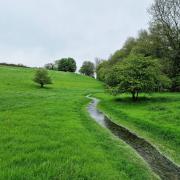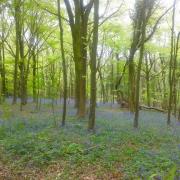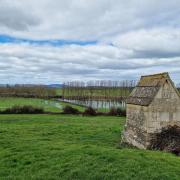A long walk and a short one in memory of a fugitive king
This being summer, how about a longer walk? How about the Monarch’s Way? Only 625 miles and quite a bit of that runs through the Cotswolds. The monarch in question is Charles II. His route commemorates one of the most amazing escapades in British history, one that seems to me less well known than it should be.
In 1651, having been crowned in Scotland, Charles led a Scottish army into England to try to recover the rest of his late father’s realm. He gave battle to Cromwell in Worcester, where Cromwell, as usual, won the day. The Scottish army was destroyed and Charles became a fugitive. Fortunately for him, he had friends willing to risk everything to help him. He travelled in the guise of ‘Will Jackson’, servant to a courageous lady called Jane Lane, who, with the Royalist officer Henry Lascelles, travelled much of the way with him.

Charles tried first to escape into Wales. When that way was barred, he travelled to Bristol, hoping to flee the country from there. When that too proved impossible, and an attempt to take ship from Charmouth in Dorset also failed, he trekked on through the South Country, until he finally escaped aboard a vessel from Shoreham in Sussex. The Monarch’s Way follows this long route as best it can, mainly using footpaths rather than the roads that Charles likely rode along.
The King was on the run for 42 days. Cromwell’s soldiers were constantly looking for him. There was a £1,000 bounty for his capture (£200,000 in today’s money). On repeated occasions he was recognised or had an alarming close shave. Charles was hardly inconspicuous: over six feet tall and with an olive complexion from his French mother. It’s hard to imagine that his life would have been spared if he’d been caught.
Approaching Stratford-upon-Avon, Charles’s party saw a troop of Roundhead cavalry resting by the roadside. Jane Lane agreed with his instinct that the safest course was simply to ride on past them. But they were at this point accompanied by Jane’s brother-in-law, who, unaware of the King’s identity but fearful because he’d once been beaten up by Parliamentarian soldiers, insisted they take a detour. As they entered Stratford from a different direction they came face to face with the same troopers, now on horseback and filling the road. Everyone held their breath. The troopers looked them up and down … and, with an exchange of greetings, let them through.

From Stratford, Charles continued with Jane and Henry to Long Marston, where they stayed the night at the house of Jane’s relatives John and Amy Tombes. As the Tombes weren’t in on the secret, ‘Will Jackson’ was sent to help in the kitchen. Here the King was quite out of his depth. The cook asked him to wind up the jack – a clockwork machine for turning joints of meat spitted over the fire. Charles had a go, but was clueless how to do it.
‘What kind of clodhopper are you that you don’t know how to wind up a jack?’ cried the cook.
Charles had to think fast. ‘I am but a poor tenant’s son. We very rarely have roast meat, and when we do we don’t use a jack.’
The cook was mollified and Will Jackson’s secret was preserved. The jack in question was said to be still in the Tombes family’s possession a century later.

Historians describe Charles’s ride through Gloucestershire via Cirencester as devoid of incident as far as Bristol. However, folklore recounts incidents in various places that complicate his supposed route. After a draughty night on Painswick Beacon, his warm welcome next morning at the hamlet below prompted him to name the place ‘Paradise’. At Boxwell Court, near Leighterton, his hostess had him spend the night at nearby Scrabbetts Farm because soldiers had searched her house twice in the past few days. In the woods above Melksham Court, Stinchcombe, Charles hid in an oak tree – again! – and distracted his pursuers by releasing a tame owl from the tree, causing them to look no further.
If walking the Monarch’s Way sounds a bit too much, a short stroll around Long Marston will give you a little taste of the landscape of Charles’s journey. Car drivers will need to park near the Mason’s Arms in the centre of the village. If you ask politely, and buy a drink afterwards, you could perhaps use the car park of the pub, which itself dates to the 17th century.

Just north of the Mason’s Arms, turn left along a snicket and head diagonally across the field beyond. You then go through two kissing gates and continue along the left-hand edge of a field to a copse of trees. From the copse, pass through two further gates, walk diagonally across the next field, and then bear left along a wire fence, and over several stiles, till your reach a lane. Turn left, past a lovely thatched cottage, to the church. A gate on the south side of the churchyard opens into a field from which you can glimpse amidst the trees the brick buildings of ‘King’s Lodge’. The right of way through this field exits at the corner where the house’s drive meets the main road, but the gate here was locked so I had to climb it. A splendid sign announces that this house is where Charles stayed.

After a short distance south along the road, take the footpath on your right. This path, with a succession of stiles, offers a different view of King’s Lodge. When you reach the far corner of a big field, turn sharp right within the same field. The right of way running diagonally across the field gives yet other views of the King’s refuge. However, the continuation of this right of way along a terrace of houses to the church has been comprehensively blocked. There’s no option but to use the stile back near the thatched cottage and then retrace your steps to the church.
Either crossing the churchyard and field again or just walking along the road, proceed to the road junction and turn left towards an industrial area. Very soon on your left is the Stratford Greenway, a Sustrans route along an old railway line. There’s a Monarch’s Way sign on the gatepost, but you’re not really on the Monarch’s Way proper until a third of a mile north up the Greenway, where the ‘southbound’ Monarch’s Way turns off along a footpath through the fields. At this point we turn left on to a road and then right and then left again between some attractive houses and through a paddock to rejoin the main road near the Mason’s Arms.

The story of Charles II’s flight from Worcester is crying out for a film. One was made in 1958: The Moonraker, which focuses on events in Dorset and doesn’t involve Jane Lane. How wonderful would be a dramatisation of the whole story, beginning with Charles’s arrival in Scotland; perhaps even a miniseries as prequel to the BBC’s excellent Charles II covering the period of the Restoration. It is an extraordinary story; Charles would regale his friends with incidents from it for the rest of his life.

Essentials
Distance: 3 miles.
Duration: 2 hours.
Level: Easy walking with some stiles and one (avoidable) gate to climb.
Parking: Road parking in Long Marston.
Toilets and refreshments: The Mason’s Arms, Long Marston.
Transport links: The No. 27 Diamond Bus from Stratford stops at Long Marston.
Map: OS Explorer 205 Stratford-upon-Avon & Evesham.
Further reading: The Escape of Charles II after the Battle of Worcester, by Richard Ollard; To Catch a King: Charles II’s Great Escape, by Charles Spencer.
Links
Route: gb.mapometer.com/walking/route_5246085
Long Marston: ourwarwickshire.org.uk/content/location/long-marston
Monarch’s Way: ldwa.org.uk
Anthony Nanson is a Stroud-based storyteller and writer. His books include Gloucestershire Folk Tales and (with Kirsty Hartsiotis) Gloucestershire Ghost Tales and Gloucestershire Folk Tales for Children. His new book, Storytelling and Ecology, is published by Bloomsbury in July.






